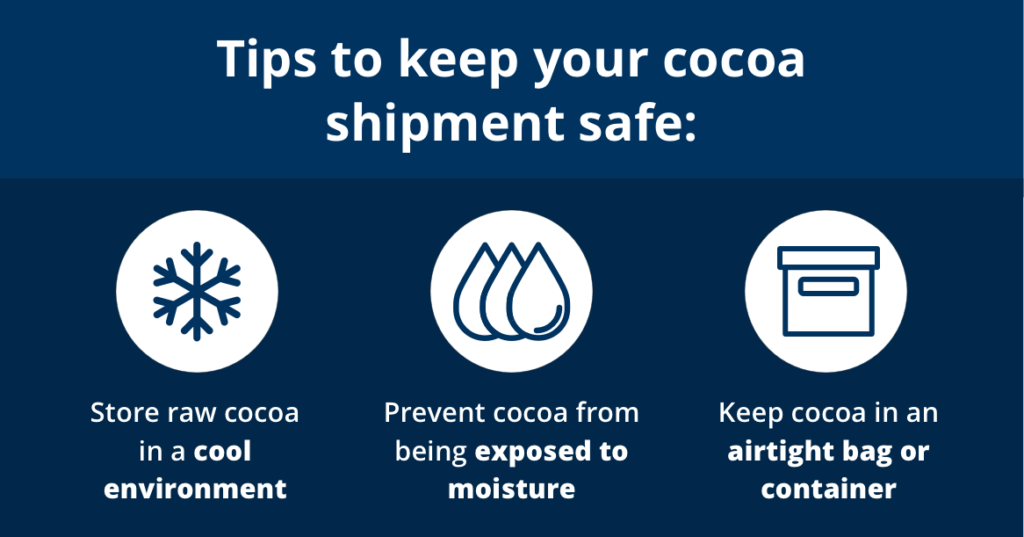
The cocoa trade can be immensely lucrative. In addition to being used to manufacture cocoa butter, ointments, and certain medicines, cocoa is the key ingredient in chocolate, which is a beloved dessert around the world. In fact, in the United States alone, Americans spend approximately $22 billion on chocolate each year.
That’s all to say that the cocoa trade is a booming industry, and global demand for cocoa doesn’t seem to be slowing down anytime soon. And, while a considerable amount of the world’s chocolate is consumed in Western countries like the United States and Europe, cocoa production largely takes place in South America and Africa. Four West African countries—the Ivory Coast, Ghana, Nigeria, and Cameroon—produce approximately 70% of the world’s cocoa supply. Out of those four countries, the Ivory Coast and Ghana are the two undisputed heavyweights when it comes to cocoa production; together, the two small nations produce more than 50% of all of the world’s cocoa.

So how is cocoa transported from Africa and South America to every corner of the globe? The cocoa is packaged and shipped internationally by exporters and received by importers. If you’re involved in the cocoa trade, or if you’re thinking of entering the industry, then you may be interested in how cocoa is typically transported. In this article, we’ll go over common methods for transporting cocoa and share some shipping and packaging tips.
As far as how cocoa is transported, there are all kinds of methods. Cocoa beans and cocoa powder can be transported via a marine vessel, plane, train, or land vehicle. Oftentimes, a combination of different methods is employed to get cocoa products from Point A to Point B.

When being shipped internationally, cocoa will usually have to travel by sea on a cargo ship at some point or another. The West African countries that are the largest producers of cocoa are positioned on the Western coast of Africa, meaning raw cocoa products can easily be delivered to the ports and exported to any destination in the world. Before being loaded onto cargo ships, raw cocoa products are placed in specially sealed bags to ensure freshness while limiting spillage and damage.
Whatever transportation method you end up using, it’s important to note that cocoa is a relatively sensitive product. It can be negatively impacted by a number of external factors, such as extreme changes in temperature, humidity, and excessive moisture. To keep your cocoa safe while it’s in transit, you’ll need to properly pack it and carefully control the environment it’s stored in throughout the journey.
The last thing you want when shipping cocoa is for it to spoil, spill, or become damaged en route to its destination. That’s why we’ve put together this short list of shipping and packaging tips that can help keep your cocoa shipment safe:

At Eurolog Packing Group, we provide a variety of innovative solutions that can keep your most sensitive cargo safe. Our blankets, absorbent pads and desiccant bags can minimize the moisture levels in any shipping container, creating the ideal dry environment for the transit of cocoa beans. Additionally, we offer Temcore thermal shipping container liners that guard your cargo against extreme temperatures, so you can maintain the cool climate needed when transporting cocoa beans.
When considering how cocoa is transported, there are a few different things to keep in mind. Cocoa beans and cocoa powder are relatively sensitive items to ship, so you have to be careful about how you prepare and package them. Here at Eurolog Packing Group, we have a variety of products that allow you to safely and effectively transport food and beverages from one place to another. We can even come up with custom shipping solutions that are tailored to your unique needs. Reach out today to see how we can help.

Sandra Malouf is the President of Eurolog Packing Group and has spent her career focused on Industrial Packaging. With a proven track record of helping businesses avoid supply chain disruptions, Sandra’s visionary leadership elevates the industry. She’s committed to developing sustainable practices and continues to shape the future of industrial packaging by listening to the customer and offering unique solutions applicable to various industries across the world. The company’s main focus is temperature stabilization and moisture damage prevention in exports affected by extreme variations in global temperatures.
© 2025 Eurolog Packing Group